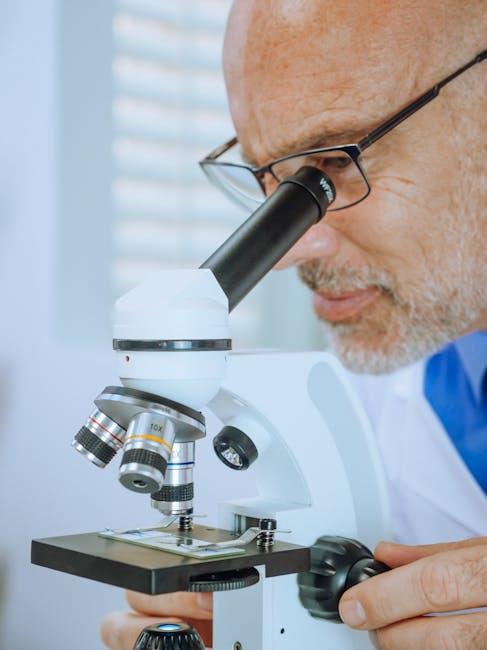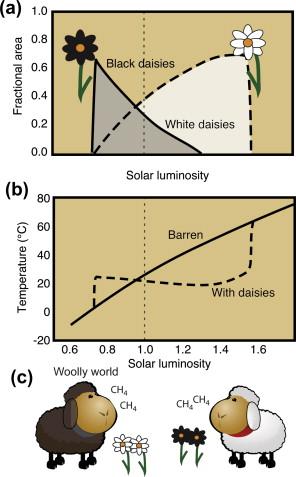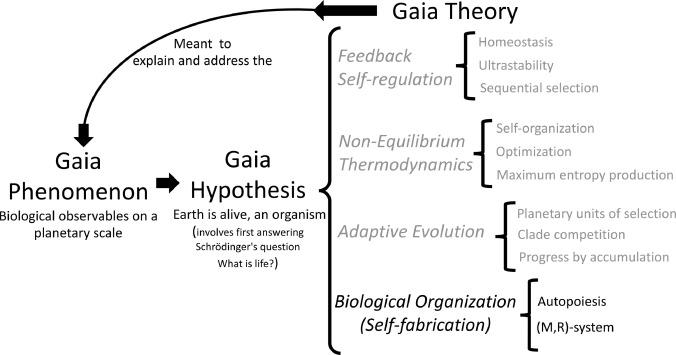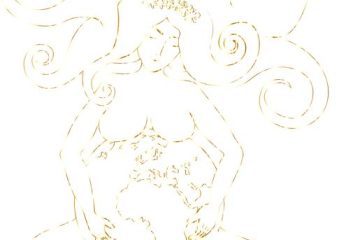Table of Contents
- Understanding the Gaia Hypothesis: A Revolutionary Perspective
- James Lovelock: The Visionary Behind Gaia Theory
- Key Principles of the Gaia Hypothesis Explained
- Implications of the Gaia Hypothesis for Modern Environmental Science
- Applying the Gaia Hypothesis: Practical Insights for Sustainability
- Q&A
- Future Outlook
Understanding the Gaia Hypothesis: A Revolutionary Perspective
Proposed by the visionary scientist James Lovelock alongside microbiologist Lynn Margulis, this hypothesis offers a transformative view of our planet. It suggests that Earth functions as a self-regulating, living organism. At the core of this idea is the concept that all living beings form a synergistic and interconnected system with their inorganic surroundings. Rather than viewing life and Earth’s environment as separate entities, the theory postulates a dynamic interplay that regulates conditions to foster life’s sustainability.
- Interconnected Systems: The hypothesis highlights the interaction between the atmosphere, oceans, soil, and biosphere as being akin to the organs that work together to maintain homeostasis in a living body.
- Self-Regulation: Processes such as climate regulation, ocean salinity, and even atmospheric oxygen levels are considered self-regulating systems influenced by both living organisms and their inorganic environment.
Critically, this theory has sparked significant discourse in scientific and philosophical circles. While some embrace it as a holistic perspective that encapsulates the complexity of life and its ongoing evolution on Earth, others argue it could overextend biological concepts beyond their traditional scope. Despite divergent views, it has undeniably stimulated new avenues of research into understanding planetary systems and the importance of sustainability. This has also fostered greater appreciation for biodiversity, with scientists exploring how each organism, down to the smallest microbe, contributes to the Earth’s overall health.

James Lovelock: The Visionary Behind Gaia Theory
James Lovelock has long been celebrated as a trailblazer in environmental science, thanks to his pioneering work on the Gaia Theory. This groundbreaking hypothesis views Earth not merely as a collection of individual ecosystems but as a single, self-regulating organism. Lovelock’s insights have sparked important discussions about climate change, sustainability, and humanity’s role in the biosphere. His central tenet—that living organisms interact with their inorganic surroundings to create a synergistic and self-regulating complex system—continues to influence scientists and environmentalists worldwide.
The innovative nature of Lovelock’s theory can be seen through several core ideas that he proposed. One such idea is that the Earth system is capable of maintaining homeostasis, much like a living organism. Key components of this concept include:
- Feedback loops that control the climate and environmental conditions.
- The role of the ocean and atmosphere in regulating Earth’s temperature.
- Biodiversity as a vital part of planetary regulation.
| Element | Function |
|---|---|
| Atmosphere | Regulates greenhouse gases. |
| Oceans | Absorb carbon dioxide and heat. |
Lovelock’s contributions extend beyond theory—his ideas have prompted actionable approaches to environmental conservation and preservation. By reimagining Earth as a single entity, he urged societies to respect these planetary boundaries, laying the groundwork for modern ecological efforts. His advocacy for renewable energy sources and more sustainable living practices resonates with today’s global push towards minimizing human impact on natural environments. Lovelock’s legacy is a testament to the power of visionary thinking and its capacity to inspire change.

Key Principles of the Gaia Hypothesis Explained
The Gaia Hypothesis, proposed by James Lovelock, suggests that Earth’s biological and physical components are interconnected to form a self-regulating complex system. This idea proposes that the planet operates as a single organism, where various feedback loops between living organisms and their environment work together to maintain the conditions for life. One of the fundamental principles is the homeostatic mechanism, akin to how the human body regulates internal conditions—such as temperature and pH levels—despite external changes. This principle suggests that the Earth system instinctively adjusts to preserve balance, making life sustainable.
Another key principle is the synergy between life forms and their surrounding environments. This perspective hinges on the co-evolution of living creatures and their habitats, where life itself influences climate and atmospheric conditions. As organisms evolve, they adapt to environmental shifts, and in turn, their biological activities can lead to changes in the environment. For example, the production of oxygen through photosynthesis by plants has not only shaped the Earth’s atmosphere but also advanced the development of diverse life forms. This highlights the mutual dependency and continuous interaction within the biosphere.
The Gaia Hypothesis further emphasizes the role of negative feedback loops in climate regulation. These loops operate to mitigate changes, stabilizing conditions conducive to life. For instance, when global temperatures rise, increased plant growth can lead to higher carbon absorption, thus cooling the planet. Key components impacting this system include:
- Oceanic Processes: Temperature regulation and carbon cycling.
- Atmospheric Composition: Maintenance of gases essential for life.
- Biological Activities: Such as decomposition and nutrient recycling.
Understanding these principles provides insight into how interconnected and resilient the Earth system can be, yet also highlights the delicate balance that could be disrupted by human actions.

Implications of the Gaia Hypothesis for Modern Environmental Science
The innovative perspective offered by the Gaia Hypothesis, introduced by James Lovelock, has profound ramifications for modern environmental science. By conceptualizing Earth as a synergistic, self-regulating entity, the hypothesis suggests that biotic and abiotic components are intricately linked, fostering optimal conditions for life. This systemic viewpoint encourages scientists and policymakers alike to consider environmental challenges as interconnected issues rather than isolated events. As a result, holistic approaches in ecological research and conservation efforts are more frequently being adopted.
Furthermore, the hypothesis prompts a reevaluation of human impact on Earth’s equilibrium. It nudges modern environmental science towards more sustainable practices by emphasizing the planet’s delicate balance. This perspective has led to increased interest in approaches such as:
- Biodiversity preservation
- Climate change mitigation
- Ecosystem restoration
In addition, the Gaia Hypothesis fosters interdisciplinary collaboration, urging fields such as geology, atmospheric science, and biology to work in concert. This interconnected view has paved the way for innovative research and technologies aiming to better understand and conserve the Earth’s natural systems. The hypothesis underscores the importance of adaptive strategies, encouraging flexibility and resilience in scientific approaches to ecological problems. As a result, there is a growing consensus on the necessity of incorporating these ecological insights into environmental policy and management strategies.

Applying the Gaia Hypothesis: Practical Insights for Sustainability
Incorporating the Gaia Hypothesis into sustainability practices involves viewing Earth as a complex, self-regulating system where living and non-living components interconnect. This approach emphasizes the harmony between human activities and the natural world. By acknowledging this interconnectedness, we can devise methods that reduce environmental impact. Adopting a holistic perspective helps in designing sustainable agricultural systems, managing urban growth, and creating resilient energy solutions. Emphasizing the cyclical nature of Earth’s processes encourages us to recycle resources, conserve energy, and utilize renewable materials effectively.
To embed Gaia principles into daily operations, businesses can focus on creating closed-loop systems. By minimizing waste and using raw materials more efficiently, companies can contribute to a decrease in overall environmental footprint. Consider the following strategies:
- Resource optimization: Implementing technologies that reduce waste and conserve energy.
- Sustainable sourcing: Procuring materials from eco-friendly and socially responsible sources.
- Eco-innovation: Developing products and services with minimal environmental impact.
Communities and policymakers can also play a crucial role by adopting practices that align with the balance of life-supporting systems. For example, green infrastructure projects, like urban parks or green roofs, not only enhance biodiversity but also improve air quality and reduce urban heat. Additionally, implementing stricter regulations on pollutants and investing in research for sustainable technologies are vital. The following table provides a snapshot of practical initiatives that reflect Gaia principles:
| Initiative | Impact |
|---|---|
| Community Gardens | Enhance local food security and biodiversity |
| Renewable Energy Installations | Reduce carbon emissions |
| Water Conservation Programs | Protect freshwater resources |



0 Comments